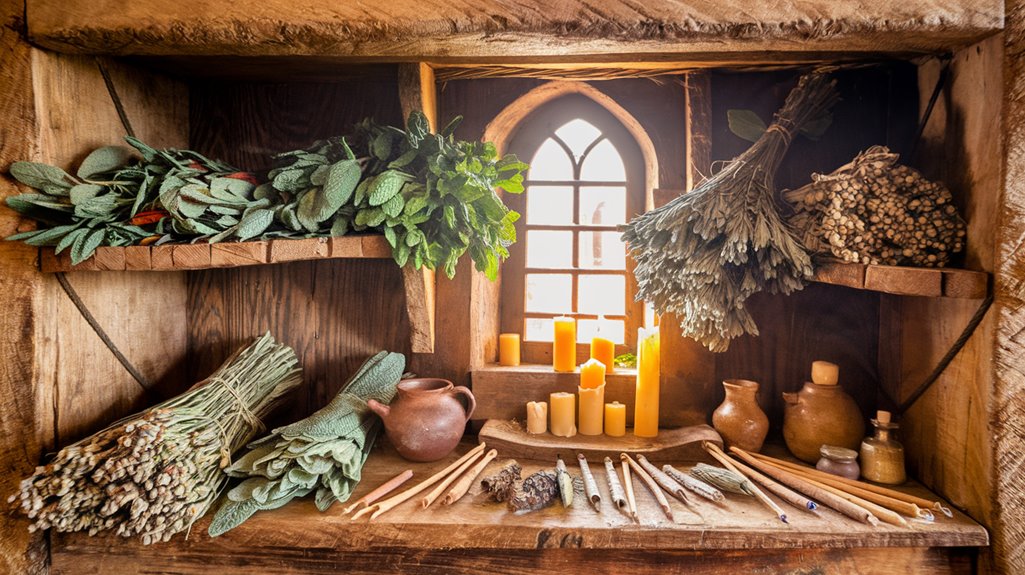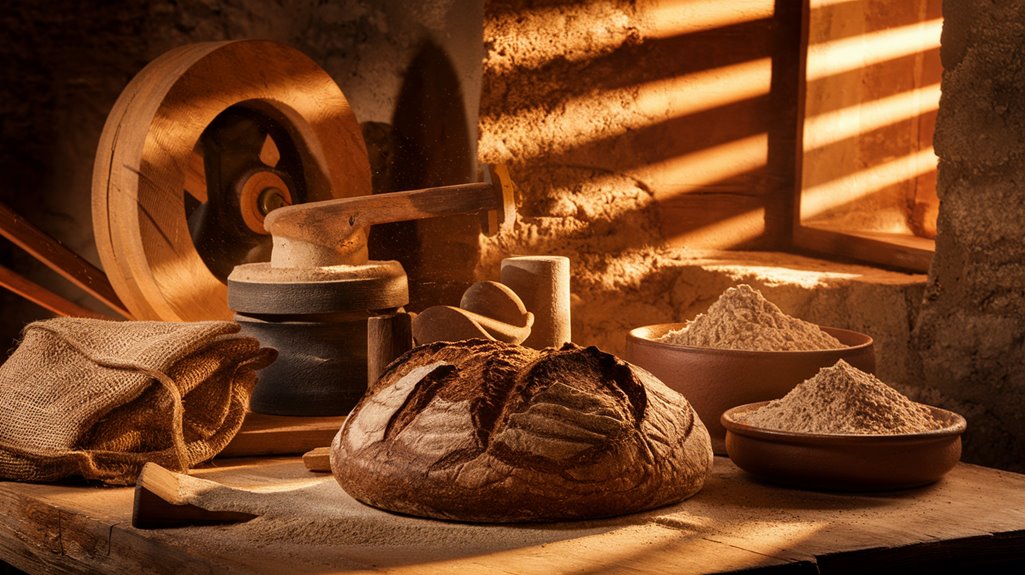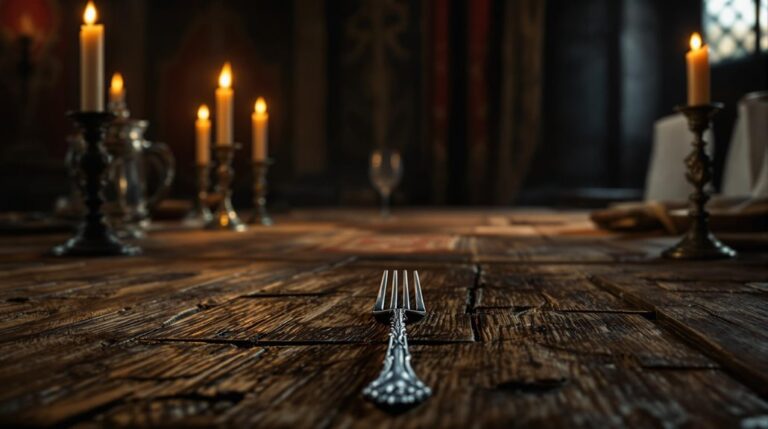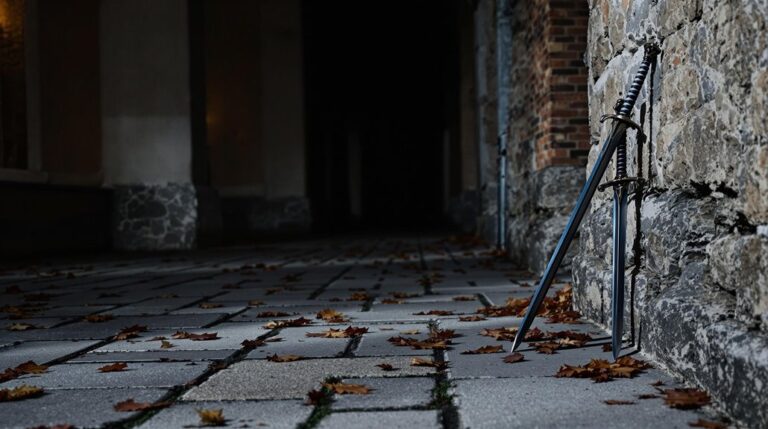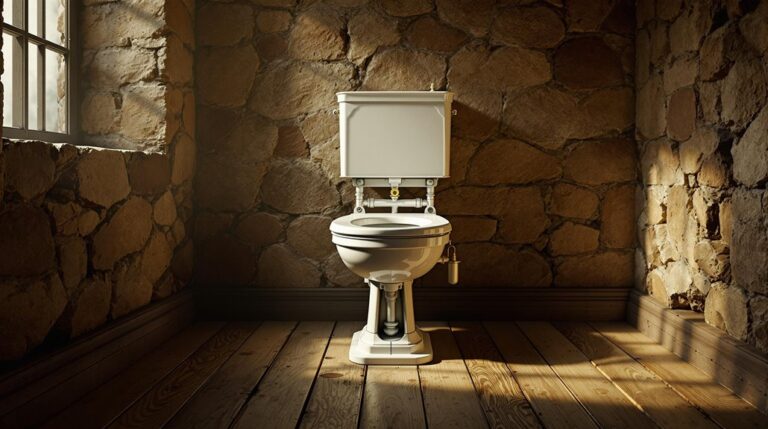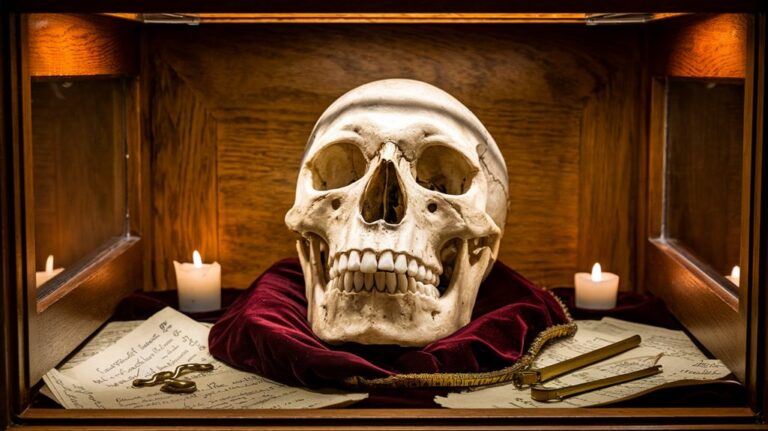Medieval Teeth: Shockingly Healthier Than Ours?
You've probably accepted the common belief that medieval people had terrible teeth, but here's a surprising truth: their dental health was far superior to that of early 20th-century populations. While 90% of teeth showed decay in the 1900s, only 20% of medieval teeth had similar problems. This stark difference raises an intriguing question: what did our ancestors know about dental care that we've forgotten? The answer lies in their sugar-free lifestyle and some remarkably effective daily practices.
The Sugar-Free Secret Behind Medieval Smiles
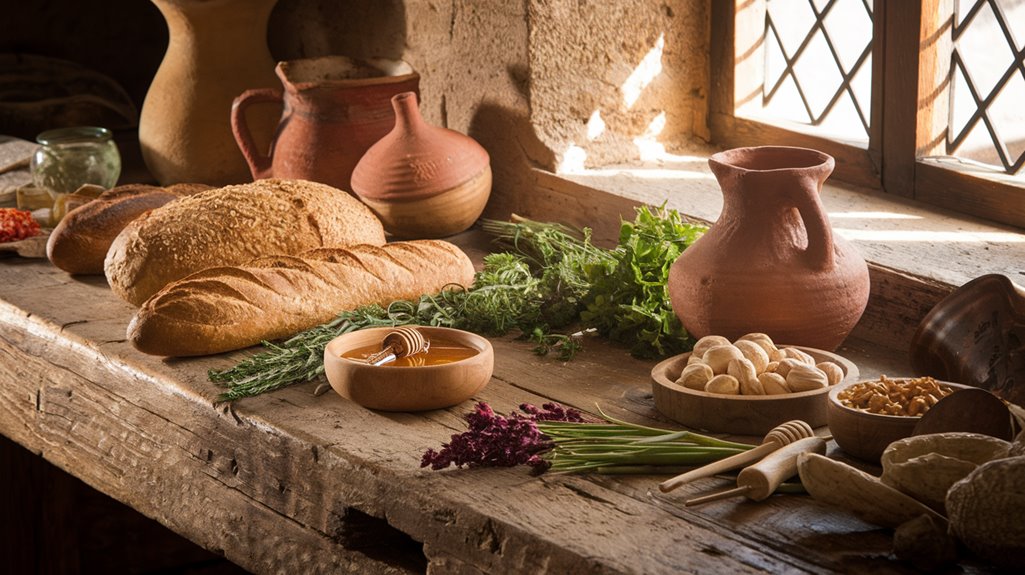
While today's dessert-laden diets often spell trouble for our teeth, medieval Europeans enjoyed surprisingly good dental health thanks to their sugar-free lifestyle.
You'd find their primary medieval sweeteners were honey and fruit, rather than refined sugar, which was a rare luxury reserved mostly for medicinal purposes.
Honey benefits extended beyond just satisfying sweet cravings; it was a versatile ingredient that manors carefully cultivated through beekeeping, while peasants gathered it from wild sources.
Unlike modern processed sugars that promote tooth decay, these natural alternatives, combined with a diet rich in vegetables and calcium-rich dairy foods, helped medieval people maintain healthier teeth than you might expect. They commonly cleaned their teeth using rough linen cloths and natural mixtures.
The average American consumes 22 teaspoons of sugar daily, a stark contrast to medieval diets.
The absence of refined sugar in their daily lives meant they experienced fewer cavities than later generations who'd access to imported sugar.
Daily Dental Routines of Our Medieval Ancestors
Medieval Europeans may have lacked modern toothbrushes, but they developed clever ways to maintain oral hygiene. You'd find them using linen cloths or woolen balls combined with tooth powders made from crushed bone, eggshell, or oyster shell for tooth cleaning. They'd often enhance these powders with vinegar, wine, or honey for added benefits.
These ancient dental practices align with Aesculapius' teachings on the importance of mouth cleansing.
For fresh breath and daily oral care, you would've used herbal remedies like sage and rosemary in your mouthwash.
Toothpicks, crafted from wood or bone, were your go-to tool for removing food particles. While stone-ground bread caused significant tooth wear, the overall dental health was surprisingly good.
In fact, you'd have had a better chance of avoiding tooth decay than your 20th-century descendants, as only 20% of medieval teeth showed decay. When dental problems did arise, local barbers performed extractions as the primary solution for toothaches.
How Stone-Ground Bread Protected Medieval Teeth
Despite its wear on teeth over time, stone-ground bread played a surprising role in protecting medieval dental health.
While the stone dust from millstones caused significant dental wear, this seemingly negative factor came with an unexpected benefit: medieval bread contained very little sugar, helping prevent cavities.
You'd be amazed to learn that archaeological evidence shows medieval people often had healthier teeth than we do today.
Their diet, centered around stone-ground bread, pottage, and limited honey, protected their teeth from decay. The transition from hand mills to mechanized grinding in the 11th and 12th centuries revolutionized flour production. People maintained good oral hygiene by using hazel twig toothbrushes.
It wasn't until the Tudor period and the introduction of New World sugar that dental problems began to surge.
Today's refined starches and sugary foods pose far greater threats to your teeth than the stone dust from medieval bread ever did.
Debunking Hollywood's Portrayal of Medieval Dental Health
Next time you watch a movie set in medieval times, you'll likely see characters with blackened, rotting teeth – but Hollywood got it wrong.
These medieval misconceptions ignore historical evidence showing that people actually maintained better dental hygiene than you might expect.
Here's what really happened with medieval dental health:
- Only 20% of medieval teeth showed decay, compared to 90% in the early 1900s.
- People used natural toothpaste made from herbs, salt, and charcoal.
- Vinegar-based mouthwashes and herbal remedies kept breath fresh.
- Low sugar consumption and calcium-rich diets protected teeth naturally.
Rather than having rotten teeth, medieval people were quite meticulous about oral care.
They used herb-infused cleaning cloths, practiced preventive care, and only sought extractions as a last resort.
The wealthy often had access to ivory dentures made from animal or human bone when needed.
When extractions were necessary, barbers performed extractions along with their other duties like haircuts and bloodletting.
What Modern Science Reveals About Medieval Mouths
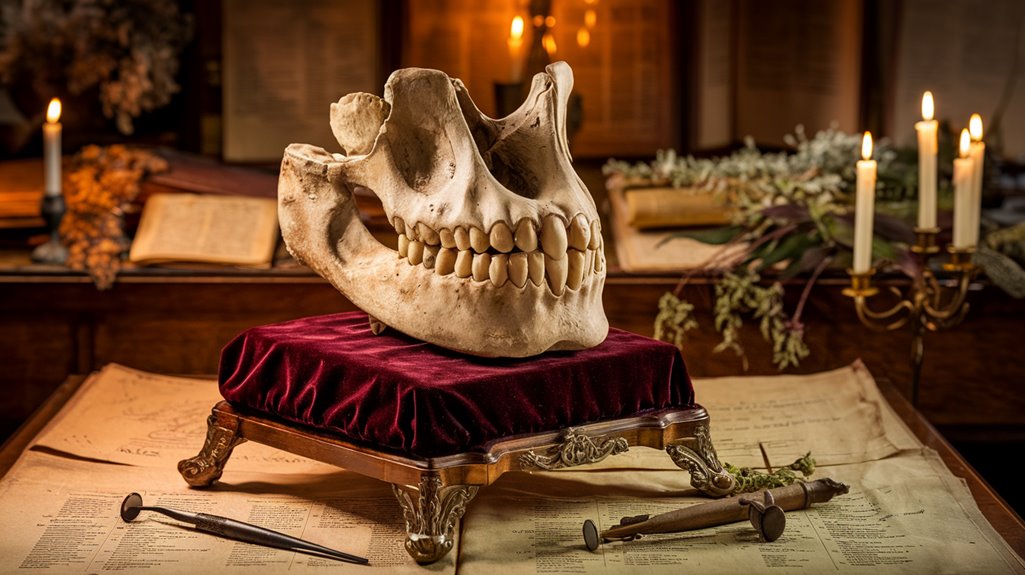
Thanks to groundbreaking scientific advances, we've discovered that medieval teeth tell fascinating stories about daily life, diet, and health practices from the Middle Ages.
Through dental anthropology, you can see how their limited access to sugar and reliance on coarse bread actually protected their teeth from decay. Scientists studying medieval microbiomes have found that despite simpler hygiene methods, people maintained surprisingly healthy mouths using natural ingredients like sage and rosemary.
Modern analysis techniques have revealed even more intimate details about medieval life. By examining tooth composition, you'll find evidence of childhood dietary patterns, breastfeeding practices, and geographic origins. Researchers found that women from foreign lands practiced extended breastfeeding compared to local mothers. Recent research has developed new methods to extract both protein and DNA data from limited dental calculus samples, maximizing the information we can learn from each specimen.
These findings show that medieval Europeans, while lacking modern dental tools, developed effective ways to care for their teeth, often achieving better oral health than many people today.

